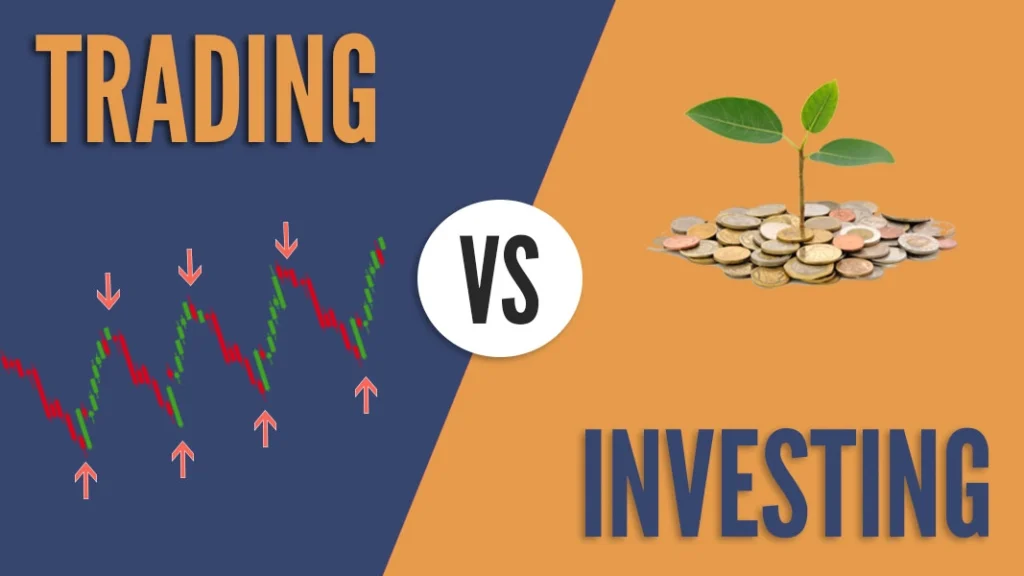Trading & Investing
Duration of transactions
Most traders aim to make short-term profits. The duration of an open transaction in the Forex market can range from several minutes to several weeks. Decisions to buy or sell an asset are made taking into account “market timing”, i.e. a trader assesses the mood of market participants and calculates the optimal moment to enter. In addition to the entry point, it is important to correctly place closing orders – stop loss and take profit. For this purpose, the user determines important support and resistance levels – a stop-loss order is usually placed behind a significant support level if a buy trade is planned, or above a key resistance level if a sell position is to be opened. Professional investors build a portfolio of stocks and other long-term assets that can grow in value over years or decades. In other words, they focus on “time in the market.”
Market Analysis
Although both traders and investors try to make a forecast of the price movement of the selected instrument, their decisions to buy and sell are based on different principles, for example, traders rely on the data obtained as a result of technical analysis of the market – the main trend, corrective price pullback, support and resistance levels, breakout/breakdown of significant levels, etc. Investors make decisions based on the results of fundamental analysis, i.e. they study financial statements and analyses of the stock and financial market. This data allows them to find undervalued companies or industries that will grow strongly in the future in order to invest in these businesses.
Risk assessment
Both trading and investing involve financial risks. Trading is considered a risky activity, as it is possible to completely drain your deposit in a few hours or days. Most often, beginners who do not adhere to the principles of risk management, for example, choose too large a lot or make several deals at the same time, overloading their deposit, lose their deposit. Some novice traders do not consider it necessary to place a stop-loss order or try to get back after a losing deal by doubling the lot. Usually, such actions lead to quick zeroing of the amount on the account. It is especially important to control risks for managing traders who have not only their own funds, but also investors’ capital. It is also not recommended to use borrowed money for trading – in case of deposit loss it will take several months or years to cover debts on loans. Investors also risk capital, but control risks by creating diversified portfolios. Usually such portfolios include different asset categories – securities, precious metals, exchange-traded funds (ETFs), shares in real businesses, bank deposits, cryptocurrencies, commercial property and the like. Due to diversification, you can ensure capital growth even if some assets lose value. And in favourable periods, deposit growth is accelerated by increasing quotations of assets with high yields, such as stocks or cryptocurrency resources.
Expected income
The key principle of financial markets is that riskier assets bring higher returns and vice versa. A professional trader can provide capital gains of several hundred per cent per year. Some cryptocurrencies have increased in value thousands of times compared to the issue price. Fluctuations in the prices of currency pairs in the Forex market also allow you to receive daily income of thousands of dollars, provided you use a profitable trading strategy. But when trading volatile instruments the risk is always high – you can both increase the deposit amount and lose the invested funds. Investments bring more modest income compared to trading. Most long-term strategies are designed to yield only 10-20% per annum of the starting capital. By replenishing the deposit and reinvesting interest, investors trigger the compound interest mechanism, accelerating the process of capital growth.
Time spent
Investing and trading are activities that require investment not only of money but also of time. According to statistics, a trader spends from 1 to 8 hours a day analyzing the market and making transactions, depending on the strategy. Participants who use intraday trading strategies spend almost the whole day at the monitors. Even with more conservative trading, it is necessary to allocate several hours a week to monitor the market situation and study analytical materials. Since investors use more long-term methods, they do not need to constantly monitor the market situation. Usually, users combine their main job or business management with investment activities. Time spent on investing can vary from an hour a week to several hours a month.
Emotional engagement
If trading can be compared to a roller coaster ride in terms of the intensity of emotions, investing is like a leisurely Sunday drive. Traders are in a state of constant emotional strain associated with price changes in the market. Moments of elation alternate with stressful situations, depending on the state of open trades and the direction of price movement at the moment. Given the high financial stakes, trading can be an emotionally challenging practice. Investing, on the other hand, does not require such a strain of emotion. With systematic investing and a diversified portfolio, asset values will increase over time under any circumstances. The only way investors can lose a significant amount of money is to sell their securities during a market crash or bankruptcy of the companies in whose stocks the bulk of their capital is invested.

